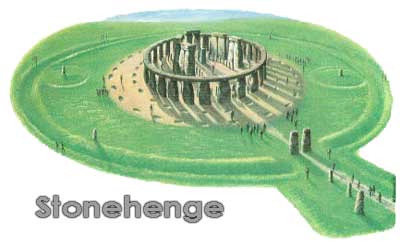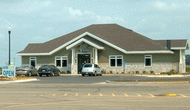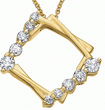BAMBU-17
Brit-Am Megalithic Bulletin Update
SCROLL DOWN \
Tracing The Israelite Paths of Migration
according to the Directions of the Prophet Jeremiah 31:21

BAMBU-17
Brit-Am Megalithic Bulletin Update
19 Tammuz 5770 1 July 2010
Contents:
1. Some notes on Iron Age Dolmens in Sweden
Only known similarities from Crimea!
2. Megalithic monuments of Sweden
by Camilla Olsson. "visible from long distances"
3. Danish Rock-Carving Similar to Sumer (Ancient Mesopotamia)
| Site Contents by Subject |
Home Research Revelation Reconciliation |
Publications |
Site Map Contents in Alphabetical Order |
This Site |
1. Some notes on Iron Age Dolmens in Sweden
Only known similarities from Crimea area!
http://inventerare.wordpress.com/2007/04/29/some-notes-on-iron-age-dolmen-or-froboketype-froboketyp-grave/
29 04 2007
Extracts:
A dolmen is a simple megalithic burial chamber with three or more uprights and one or more capstones, these are normally dated to the Stone Age but in Sweden we have one type that is dated to the Pre-Roman Iron Age or the Roman Iron Age (ca 500 B.C. ' 400 A.D.). These are a lot smaller than the Stone Age ones, most often built by three or four upright stones and sometimes with a capstone. In Swedish these are called 'Jarnalders dos' or in older texts they sometimes are referred to as graves of the Froboeke type.
The Iron Age dolmens are quite small and often build by three flat blocks standing up and one used as a roof. The measurements of the blocks are ca 85-95 cm in height, 55-75 cm in breadth and ac 20-30 cm in thickness, leaving a small open space within. One side is left open, of the ones I've seen and read about the open side is the south side.
T.J Arne used the artefacts to date the graves. He used comparative materials from Denmark and Gotland that was and is dated to the Roman Iron Age. As this grave type is unusual in Sweden T.J. Arne searched for analogies otherwise in Europe, the only ones he found where in Crimea where N. Rjepnikoff excavated 15 dolmen like graves in 1907 near the village Skelja.
In 1935 Claes Claesson excavated one dolmen in the village grave filed at Pukaryd, Tofteryd parish, Smiland. The dolmen was placed in the north corner of a square stone setting.
In 1992 excavations where made at the Iron Age grave field of Byarum in Sm'and...On the grave field, dated to ca. 400-550 B.C. (the migration period), there were several grave types represented such as round covered stone settings, stone circles and Iron Age dolmens. The dolmens found at this grave field were placed within square stone settings. All openings were fronted towards south, within the dolmens a small 'bone-chamber' was found, besides cremated bone a few finds of bronze and iron was also found.
//Magnus Reuterdahl
2. Megalithic monuments of Sweden by Camilla Olsson
"visible from long distances"
http://www.janbily.de/Megaliths/sw_text.htm
Extracts:
The megalithic monuments of Sweden date back to the Neolithic period, about 3 800 ' 1 800 BC. There are three types of monuments, Dolmens - the oldest type, Passage graves and Stone cists - the youngest. Almost all megalithic monuments found in western Europe dating to this period of time are located throughout the coast-lines and so are the Swedish ones with one exception, a large concentration of passage graves are located to a small area called Falkbygden in the inland of western Sweden. The Scandinavian megaliths are of the same tradition as the megaliths found in western Europe. The building technique is the same as in similar European monuments, although the ones in Scandinavia are not always as monumental (compared to Newgrange and Gavrinis). All three types have been used for burials during long time spans and also for secondary burials in other time periods as for example in the Bronze age (1 800-500 BC).
...Sometimes traces of a stone circle set of on the edge of an earthen mound can be found around the stone construction. There are about 80 known dolmens in Sweden situated along the west-coast, from Bohuslon in the north to Scania in the south. In Norway there are only 2 or 3 known stone monuments, dolmens, from this time period. They are located on the west-coast close to the Swedish/Norwegian boarder.
Dolmens were replaced by a more elaborate type, the passage graves, dating from about 3 400 BC- 2 400 BC. These tombs were communal and held the bodies of many people not necessarily of the same family. Broken pots are often found outside the entrance or the chamber, sometimes in vast amounts (in one case 45 000 sherds). The pots have probably been used at funeral feasts or burial rituals. Traces of food offerings have been found in the ceramic material. The passage graves were covered by an earthen mound with a stone wall or circle surrounding it. There are about 350 known passage graves, about 250 of them are located in the Falbygden area. Other passage graves can be found throughout the west-coast and on the island 'and outside the southern part of the east-coast.
Both dolmens and passage graves are mostly located at hill-tops that has a view overlooking a large area, they have been visible from long distances. Many times roads are located close to them and they are probably in some cases traces of very old travelling tracks, maybe dating as far back as to the Neolithic time. In some areas the monuments are found in big clusters, situated in rows on high ridges in the landscape. Dolmens and passage graves are similar in building technique, although there are differences. They were in use over long time period that spanned over 1 500 years.
Around 2 400 BC a completely new type of monument is introduced, the stone cists or coffins. Stone cist are found in concentrations in the inland as well as along the coasts in the middle and the south of Sweden. They were in use until about 2 000-1 800 BC. Some of them are very long and divided into rooms by stone slabs and some have big round hole/s in the short-ends. A mound or a cairn often cover the cist. The burial pattern is the same as of the passage graves although the broken pottery is not found around this grave type. These monuments differ from the other two types, they don't have the specific location on hill-tops and have been in use over larger areas. The known number, about 1 500, is also a lot higher than for the other two types.
Rock carvings have been found on all of the monument types, but do not occur on all of them. The most common figure is the cup mark or cupulae, round 'bowls' carved in the stone surface. They are often carved in the roof stone and on some have as many as 450 cup marks been found. Since most rock carvings in Scandinavia date to the Bronze age, it has long been discussed if the ones found on the monuments are of the same date as the monument itself, but scholars now agree that they most certainly are.
Other types of stone monuments have been in use during the Bronze
(1800-500 BC) and Iron (500 BC - 1100 AD) age, but they are of different types such as ship settings, stone circles, standing stones, cairns etc and do not have a connection to the western European megalithic tradition.
3. Danish Rock-Carving Similar to Sumer (Ancient Mesopotamia)
Dolmen, long barrow, passage grave, wedge tomb,
http://freepages.history.rootsweb.ancestry
.com/~catshaman/262mon/0monu2.htm
Extract:
These rock-carvings are on a stone from Zealand Denmark. The lower part is similar to a Sumerian seal except that the lying Ereshkigal is missing.
See also:
BAMBU Archives: Contents
For a Map and List of Israelite Migratory Routes see:
http://www.britam.org/Questions/QuesHistory.html#Migratory
For more maps of the Megalithic Trail of Migration see:
http://www.britam.org/Proof/Attributes/roleDolmen.html
There is much archaeological evidence some of which we have quoted in the past.
http://www.britam.org/Questions/QuesArchaeology.html#Stonehenge
Dolmens and the Bible
http://www.britam.org/Proof/Attributes/roleDolmen.html
Answer to Queries on Archaeology Question no.3:
"What do Dolmens and other megalithic monuments such as Stonehenge tell us?
http://www.britam.org/Questions/QuesArchaeology.html#Israel
 |
Skewes Jewelry 
|
 |
 |
